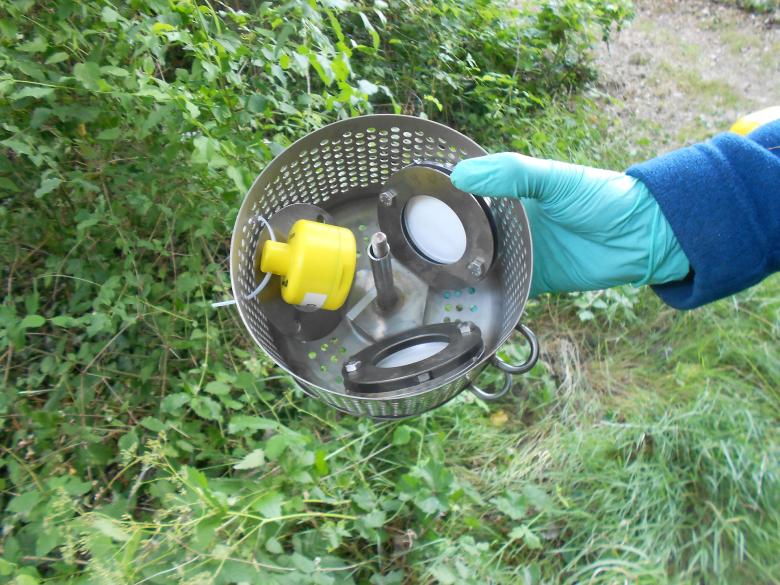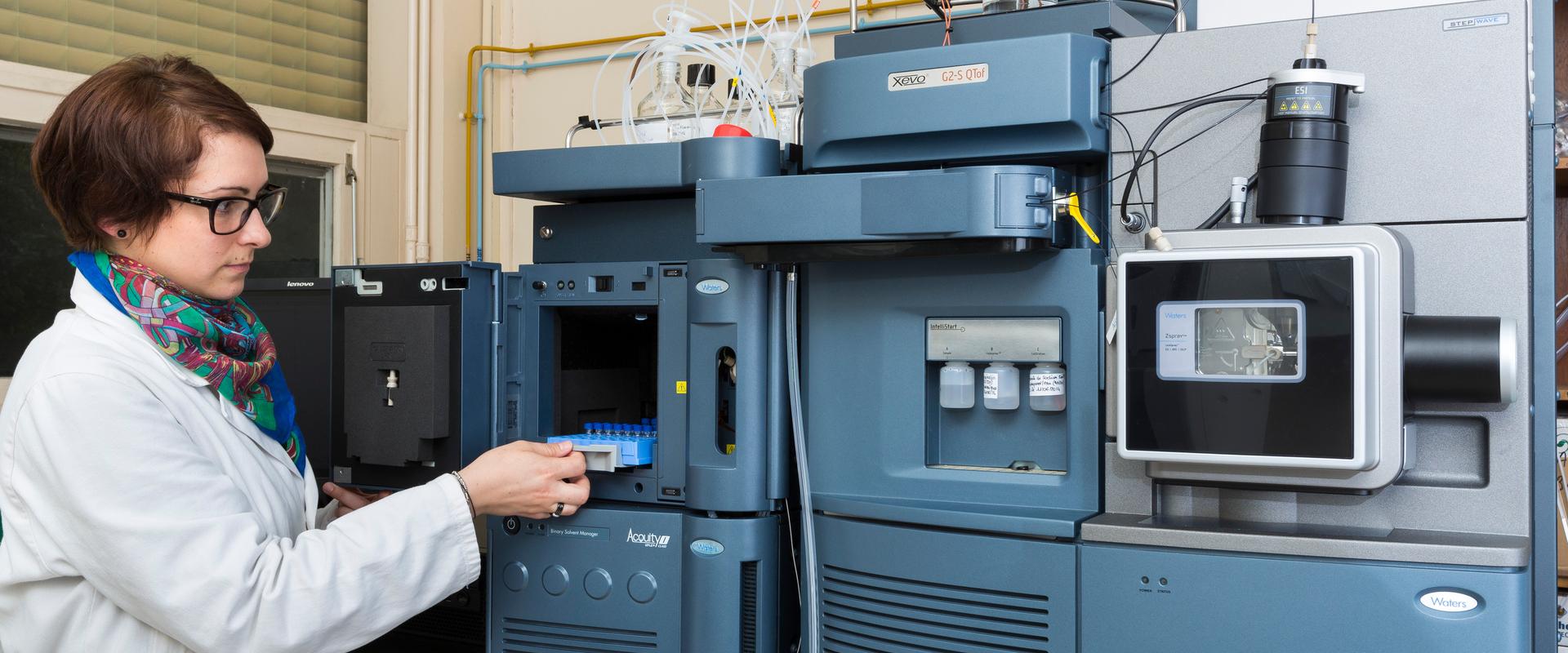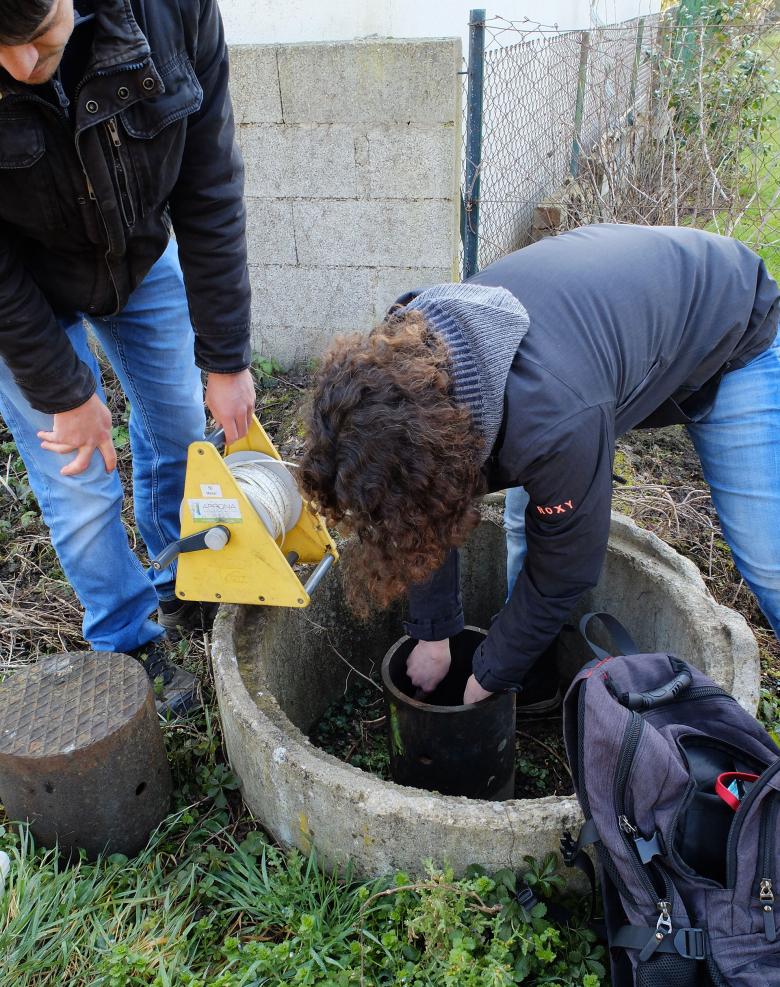
Exposure system for passive samplers such as the Polar Organic Chemical Integrative Sampler (POCIS).
© BRGM - Anne Togola
Issues and needs
The project’s main goal is to improve our knowledge of the micropollutants that may be of concern in the Rhine aquifer. This knowledge is key to shaping strategies for tackling contamination by these compounds. It can then be used to assess associated environmental and health hazards and prioritize action.
Expected results
The work programme focuses on two main tasks :
- Overall assessment of the micropollutants found in the Upper Rhine groundwater;
- Characterising micropollutants finding their way into the underlying groundwater system of rivers in which treated wastewater is discharged (pilot site).
BRGM’s role
BRGM uses its expertise and track record as a public research institution across several focus areas, one of which is to implement specific analytical methods, such as “non-target screening” using liquid chromatography coupled with high-resolution mass spectrometry (LC-HRMS). Planned work also includes developing innovative monitoring strategies including implementing passive samplers and powerful data processing to better understand spatial and temporal variations in micropollutant concentrations in water environments. The project aims to address scientific knowledge gaps in understanding the pathways through which micropollutants get into groundwater, and to provide information for decision-making by water resource managers.
Specifically, BRGM’s involvement includes :
- Implementing innovative data analysis methods to demonstrate the links between analytical results and the pressures caused by the use of chemicals, and developing groundwater quality indicators with regard to pesticides, including metabolites and other emerging pollutants, in particular from domestic activities, which are discharged by wastewater treatment plants;
- Chemical and isotopic tracing along the hydrological continuum, non-target screening, implementing passive samplers, and interpreting findings taking into account the hydro(geo)logical context of the French pilot site.
Partners
The ERMES-ii-Rhin project brings together technical and financial partners from three countries:
- Rhine-Meuse Water Agency (AERM, France);
- Alsace Plain Groundwater Protection Association (APRONA, project leader for France);
- Amt für Umwelt und Energie – Kanton Basel-Stadt and Basel-Landschaft (AUE BS and BL, Switzerland);
- French Geological Survey (BRGM, France);
- European Alsace Council (CEA, France);
- Regional Directorate for Environment, Planning and Housing (DREAL, France);
- Hessisches Landesamt für Naturschutz, Umwelt und Geologie (HLNUG, Germany);
- Landesanstalt für Umwelt Baden-Württemberg (LUBW, Germany);
- Landesamt für Umwelt Rheinland-Pfalz (LFU, Germany);
- Région Grand Est (North-Eastern France) (RGE, France);
- Struktur- und Genehmigungsdirektion Süd – Rheinland-Pfalz (SGD Süd, Germany); and
- the European Regional Development Fund (ERDF Interreg).
Historical background
In 2016, a cross-border inventory of the Rhine groundwater quality was carried out as part of an INTERREG V project on Monitoring Changes in the Groundwater Resource Underlying the Upper Rhine, led by APRONA. This led to new analytical campaigns to detect an array of compounds, including the main contaminants and other substances belonging to several chemical groups (phytosanitary products, chlorinated solvents, etc.) at around 1,500 locations, including 700 situated in the French part of the aquifer. This project also looked at “emerging pollutants” at fewer locations (100 to 200 depending on the parameters) and covering183 substances of emerging concern.
BRGM’s involvement included interpreting data to inform regional and national policies on groundwater management, such as the Master Plans for Water Development and Management (SDAGE) and the Water Framework Directive.
This novel project began in 2022 to carry this work further as part of the INTERREG VI programme for 2022–2025. It aims to investigate how micropollutants can pass through different compartments (surface water – groundwater) in order to address knowledge gaps using innovative approaches based on implementing passive samplers and non-target screening.







